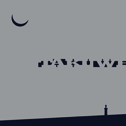Click the logo to go to the Takuwe homepage
The military left Wounded Knee around sunset with wagons of wounded soldiers and some Lakota survivors of the massacre. Their destination was Pine Ridge. They arrived after 9 pm. The pews of Holy Cross Episcopal Church were removed, and straw was strewn on the floor for the wounded who were laid down and tended to by Dr. Charles Eastman and other assistants. A blizzard blew in on New Year’s eve. The next day, January 1, 1891, Dr. Eastman and others traveled to Wounded Knee where they “found and saved eleven people.” Two days later began the burial of the bodies remaining at Wounded Knee.
Tuesday December 30
Sunrise 7:21 AM. Sunset 4:24 PM. Moonset 10:29 AM. Moonrise 8:45 PM. illumination 82%.
High 57°. Low 30°. Partly cloudy.
In this place of many pines, west of Wounded Knee Creek, we stayed that night. I had one blanket and I was wearing several dresses. I had to tear up part of them to make bandages for my wounds. ‒Mrs. Mosseau
Wednesday December 31
Sunrise 7:22 AM. Sunset 4:24 PM. Moonset 10:53 AM. Moonrise 9:47 PM. Illumination 74%.
High 38°. Low 23°. Partly cloudy. Snow and high winds starting in the morning, causing blizzard conditions throughout the day.
Before the burial party came out from the Agency, the Indians had been over the field, especially was this true of Short Bull who belonged to the Rosebud Reservation. Short Bull, who was with the hostiles, came onto the field from the Agency and gathered up his relatives who were in the fight. ‒Joseph Horn Cloud
Thursday January 1
Sunrise 7:22 AM. Sunset 4:25 PM. Moonset 11:15 AM. Moonrise 10:48 PM. Illumination 66%.
High 32°. Low 12°. Partly cloudy dring the day, clear at night.
“We had feared that some of the Indian wounded might have been left on the field, and a number of us volunteered to go and see. I was placed in charge of the expedition of about a hundred civilians, ten or fifteen of whom were white men. We were supplied with wagons in which to convey any whom we might find still alive. Of course a photographer and several reporters were of the party.
Fully three miles from the scene of the massacre we found the body of a woman completely covered with a blanket of snow, and from this point on we found them scattered along as they had been relentlessly hunted down and slaughtered while fleeing for their lives. Some of our people discovered relatives or friends among the dead, and there was much wailing and mourning. When we reached the spot where the Indian camp had stood, among the fragments of burned tents and other belongings we saw the frozen bodies lying close together or piled one upon another. I counted eighty bodies of men who had been in the council and who were almost as helpless as the women and babes when the deadly fire began, for nearly all their guns had been taken from them.
It took all of my nerve to keep my composure in the face of this spectacle, and of the excitement and grief of my Indian companions, nearly every one of whom was crying aloud or singing his death song. The white men became very nervous, but I set them to examining and uncovering every body to see if one were living. Although they had been lying untended in the snow and cold for two days and nights, a number had survived. Among them I found a baby of about a year old warmly wrapped and entirely unhurt. I brought her in, and she was afterward adopted and educated by an army officer. One man who was severely wounded begged me to fill his pipe. When we brought him into the chapel he was welcomed by his wife and daughters with cries of joy, but he died a day or two later.
Under a wagon I discovered an old woman, totally blind and entirely helpless. A few had managed to crawl away to some place of shelter, and we found in a log store near by several who were badly hurt and others who had died after reaching there. After we had dispatched several wagon loads to the agency, we observed groups of warriors watching us from adjacent buttes; probably friends of the victims who had come there for the same purpose as ourselves. A majority of our party, fearing an attack, insisted that some one ride back to the agency for an escort of soldiers, and as mine was the best horse, it fell to me to go. I covered the eighteen miles in quick time and was not interfered with in any way, although if the Indians had meant mischief they could easily have picked me off from any of the ravines and gulches. ‒Charles Eastman
Friday January 2
Sunrise 7:22 AM. Sunset 4:26 PM. Moonset 11:36 AM. Moonrise 11:49 PM. Illumination 56%.
High 46°. Low 9°. Mostly clear.
